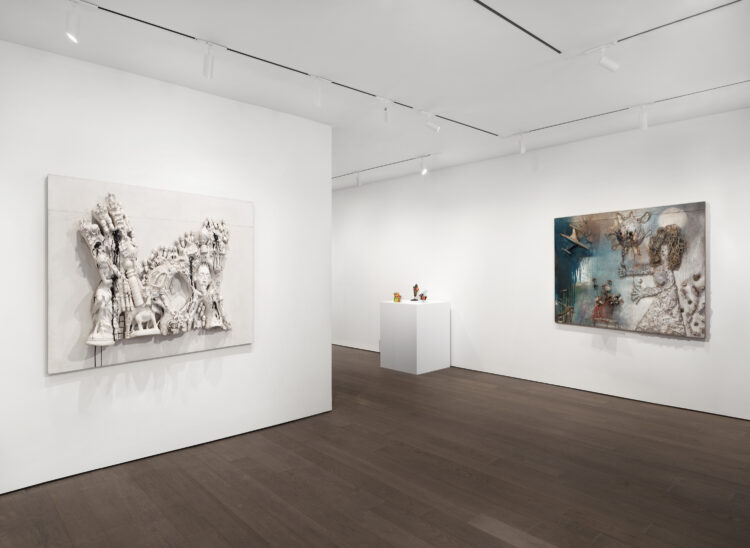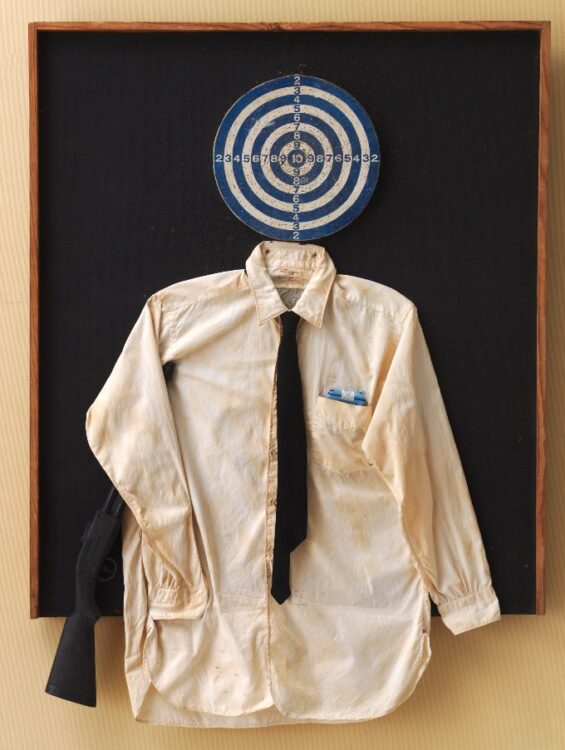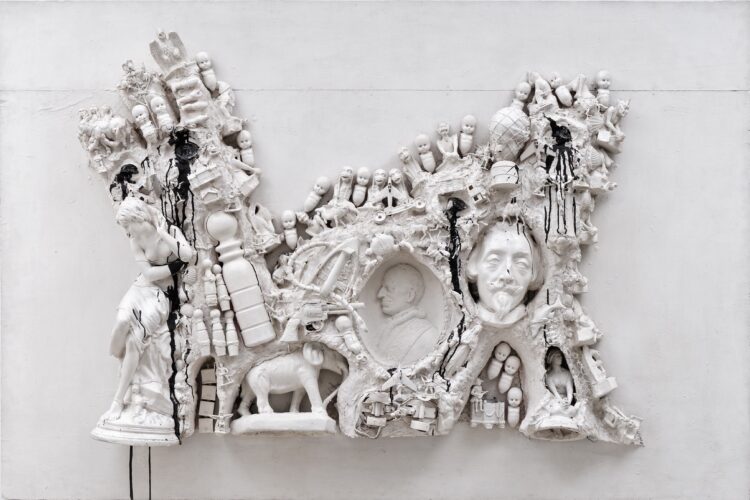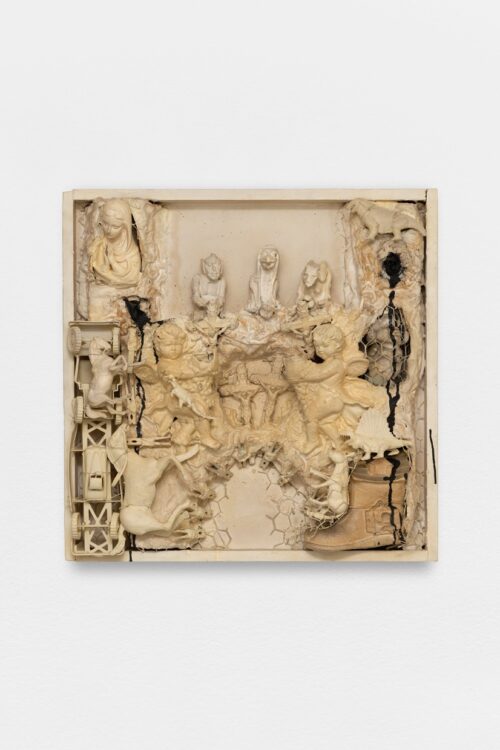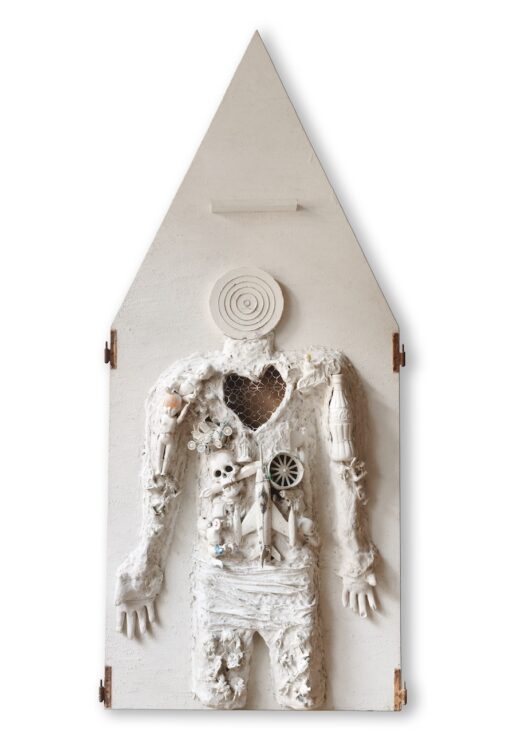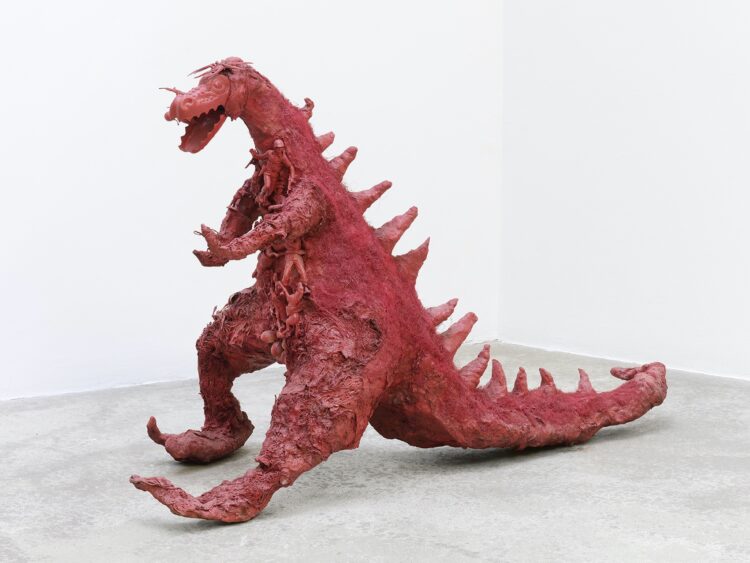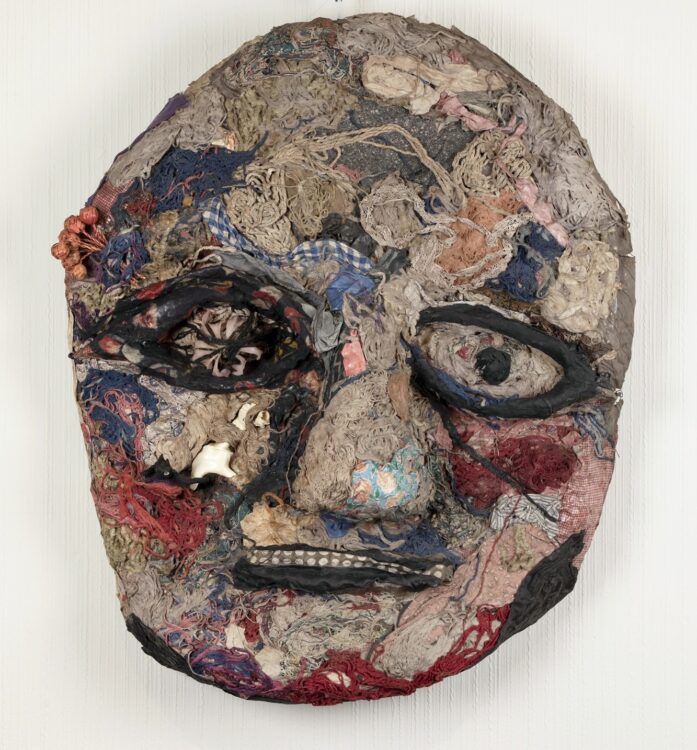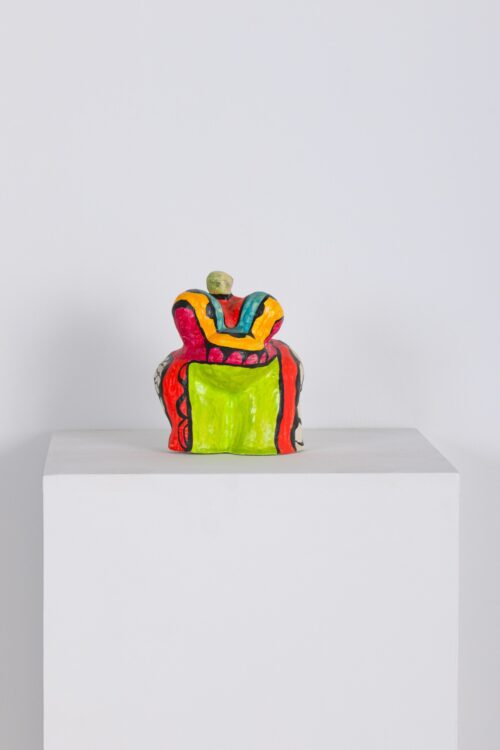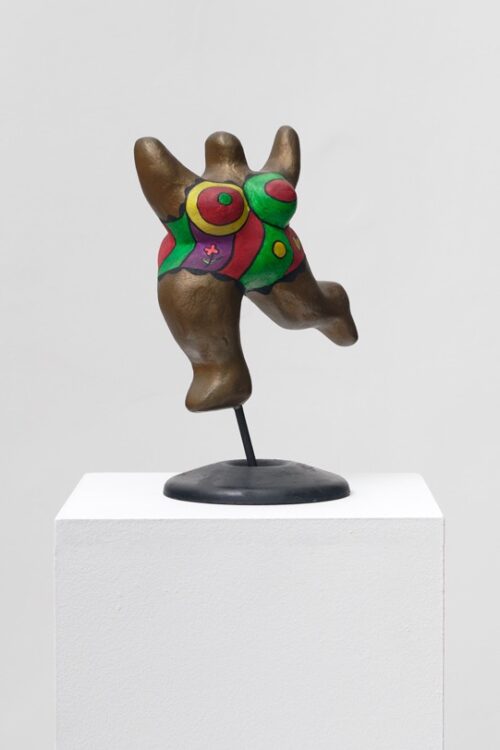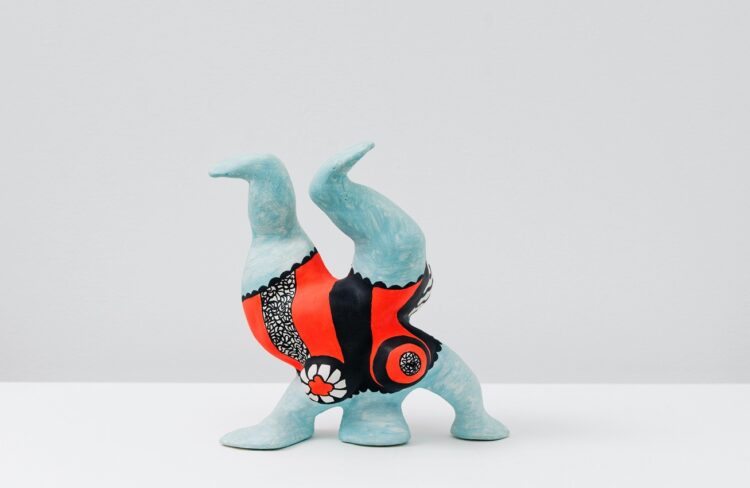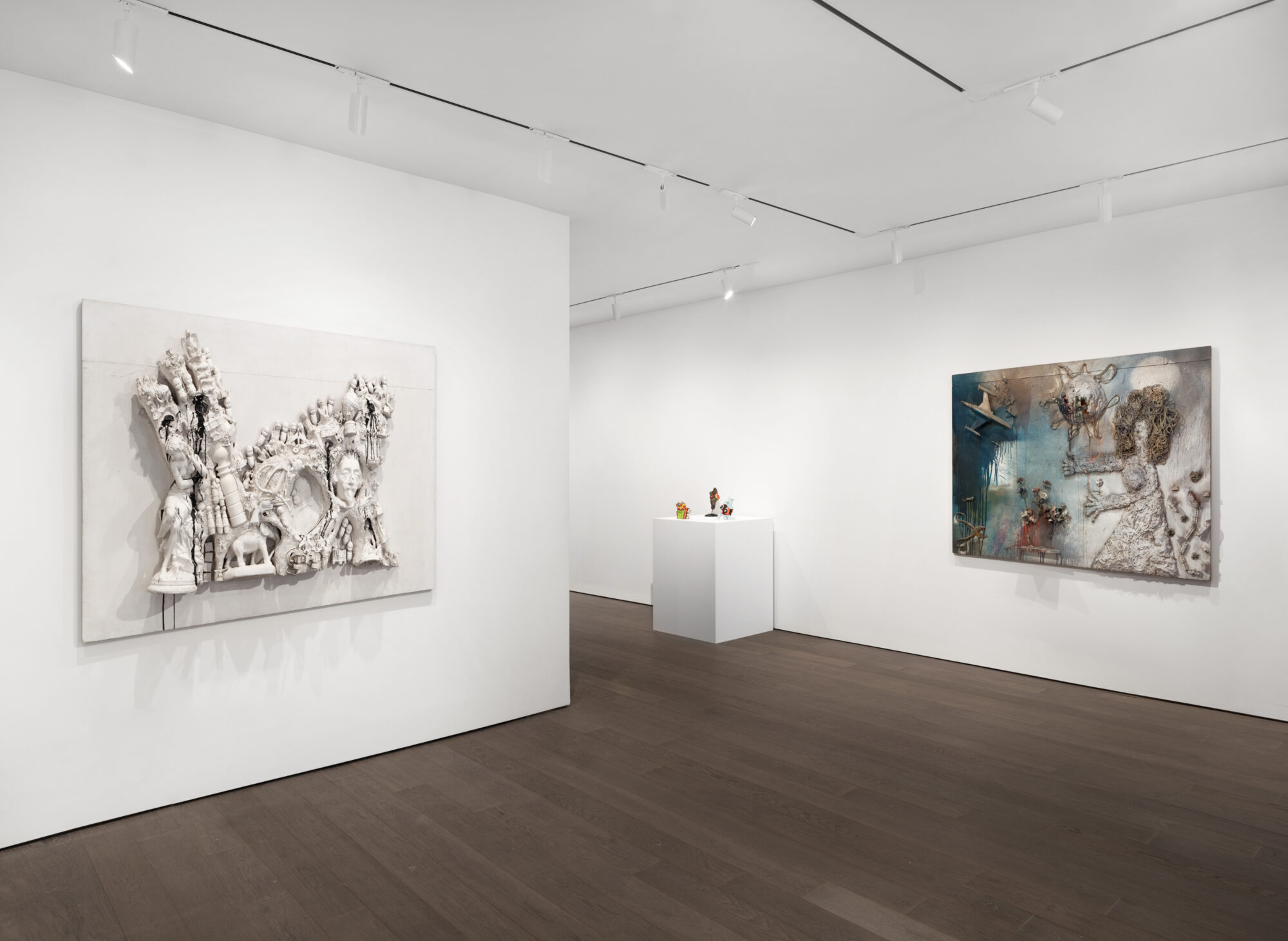
In 1960, Saint Phalle decided to dedicate herself entirely to her art career and moved in with Jean Tinguely, where they lived and worked alongside each other in his studio on Impasse Ronsin, a street in Montparnasse, which was at that time, the epicenter of the Parisian art world. Saint Phalle and Tinguely resided in the studio for much of the 1950s and early 1960s, and during this period, Saint Phalle made a group of assemblages resembling figures with dart boards as heads. Martyr Nécessaire/Saint Sébastien/Portrait de mon Amour/Portrait of Myself, 1960-61 is one of the first of these pieces that will be on view in this exhibition; this piece suggests a narrative of a love affair gone awry. Activated by visitors who throw darts at them, the dart board assemblages are arguably the first instances of performance art in the modern age. They garner widespread attention and are included in prestigious shows, yielding the artist international notoriety.
It was on February 12,1961 in the backyard of a house on Impasse Ronsin where Saint Phalle organized her first shooting session. Highly aware of the theatricality of her actions, she designed an all-white jumpsuit as her shooting costume, and explained her motivations when she remarked, “I was shooting at myself – I was shooting my own violence and the violence of the times.” The assemblages had bags of paint, organic matter, and other viscous materials embedded in them, which when shot at, burst color across the surface of the canvas. This can be viewed as both an expansion of the vocabulary of painting and a commentary on society of the time– conventional institutions such as family, the patriarchy, and the church. These works immediately caught the attention of critic and philosopher Pierre Restany, who invited Saint Phalle to join the “Nouveaux Réalistes,” a group of individually minded artists gathered by Restany. In June of 1961, Restany organized Saint Phalle’s first solo show at Galerie J, Tir à volonté.
The Nouveaux Réalistes viewed society, its products, and byproducts as their art materials, thus they rampantly appropriated from the “real world.” While no single style unified the group, they all sought to challenge social and artmaking conventions. Saint Phalle’s assemblages reflect this newfound liberty, and, perhaps due to her inclination to be a storyteller, she uses functional objects along with those of symbolic and nostalgic essence, such as doll parts, plastic vehicles, and toy weapons. The Tirs became the pretext to tell a story, such as in Le Château de Gilles de Rais, and in later sculptural assemblages such as the monumental mask of Docteur Mabuse, 1964. That same year, inspired by the pregnancy of her friend Clarice Rivers (wife of Larry Rivers) Saint Phalle began a new body of work that would become her most famous, the Nanas, a “jubilant celebration of women.” Unlike the earlier assemblages, these luminous, voluptuous embodiments of womanly strength and joie de vivre demonstrate Saint Phalle’s aspiration: to flaunt a liberated femininity.
This exhibition describes the “birth” of an international artist who has been using tropes of personal and socio-political themes throughout her career. It features several iconic works previously exhibited in major museum retrospectives world-wide, and which have not been seen in a New York gallery since the 1960s.
This exhibition is accompanied by an illustrated publication with an essay titled Claiming Reality by Catherine Francblin, the French art critic and author of the artist’s biography Niki de Saint Phalle, La révolte à l’œuvre (Hazan, 2013).
For further information about the artist and the works in the exhibition, please be in contact with Natalia Sacasa at natalia@fleiss-vallois.com.
September / 07 / 2023
November / 22 / 2023

